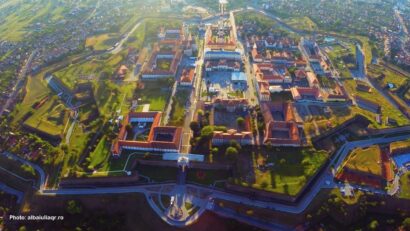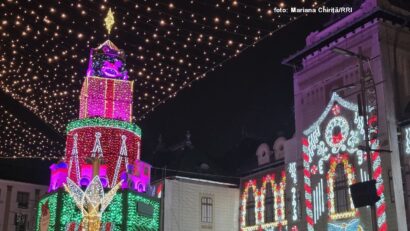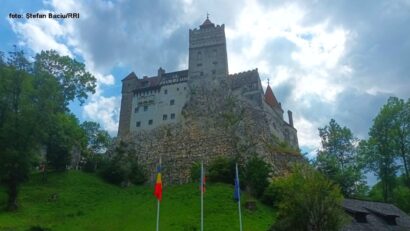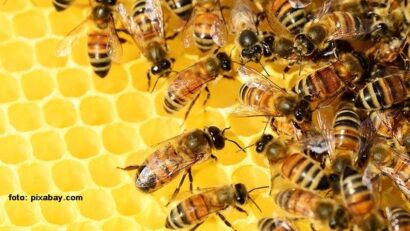The wooden churches of Maramureș
A new project aims to document and promote the centuries-old wooden churches in Maramureș.
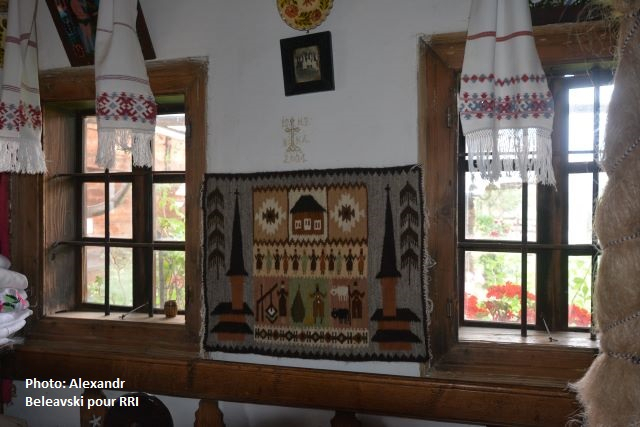
Daniel Onea, 25.08.2022, 14:00
Located in northern Romania, Maramureș is a very attractive tourist destination owing to the beauty of its landscape and the wealth of its ethnographic heritage. Today were going to talk about its old wooden churches, which are historical sites of great national and world value. Maria Mirela Poduț, from the Liviu Borlan county centre for the conservation and promotion of traditional culture in Maramureș tells us more about these churches:
“Churches are usually located in the middle of villages, just as for believers God is the centre of the universe. Churches also served as places of refuge during invasions or epidemics. Our centre initiated a series of projects to promote these structures, but during the pandemic many activities were held online. A previous project, carried out between 2018 and 2020, consisted in the researching of old churches from three ethnographic areas: Chioar, Lăpuș and Maramureș. In 2021, the research was extended to a fourth ethnographic area, Codru, part of which is located in Maramureș county. This brings to an end a series aimed at providing an overview of all wooden churches listed as historical monuments in the four ethnographic regions of Maramureș: historical Maramureș, Chioar, Lăpuș and Codru.”
The Land of Codru is situated in north-western Transylvania and is a well-defined region from an ethnographic point of view, while incorporating many influences from the neighbouring regions. Maria Mirela Poduț explains:
“Its called the Land of Codru, which means woods, because in the past it used to be covered by large oak and beech forests, although today its landscape is dominated by valleys and gentle hills. Wooden churches from Codru region – A virtual guide is a project aimed at researching and promoting 18 old wooden churches listed as historical monuments and which can still be seen today in an ethnographic area that can be found in several counties, namely Maramureș, Sălaj and Satu Mare.”
The wooden churches in this area are monuments of architecture almost unknown to a wide audience, but only to a small group of specialists, says Maria Mirela Poduț from the Liviu Borlan county centre for the conservation and promotion of traditional culture in Maramureș:
“There is relatively little information about these wooden structures. Some of the information available was from the 1970s and hadnt been updated since. Our project aims to make these structures known, specifically the wooden churches in Codru that have been preserved, with information about their history, architectural details, paintings and the stories associated with them. Virtual tours for these churches are available. As for the characteristics of the churches, they are both distinct from other similar wooden structures in Romania and similar. Its important to note that six of them still hold religious services today for small and very small communities. Like in previous years, the project had two main components: research and promotion. For the research part we used archive information, such as studies and articles written by specialists from the fields of art, history and architecture, and information collected through field work. We created virtual guides for each of the structures researched, accompanied by photographs showing the current state of the churches, with all the information obtained on text and image format being available in the wooden churches section of the website, at codru.culturamm.ro.”
The innovative nature of the project is also given by the dendrochronological dating of six of the churches included in the project. Maria Mirela Poduț explains:
“Valuable information surfaced about these structures and their history. The dendrochronological dating is the most precise dating method today. The process consists in lab tests of a wood sample from the church. The method allows us to find out the age of the trees from which the church was built and the approximate year of the construction. As a first, the project also contains footage and research about the situation of the wooden churches in the Codru area and which are also available in the section of the website dedicated to the wooden churches.”
Another component of the project and of the website is a section called “lost churches”. Maria Mirela Poduț has further details:
“This section aims to provide a more complete picture, in so far as this is still possible, of the lost heritage in the Codru area, in virtual, electronic format, sadly the only way still possible. It provides relevant information and photographs of wooden churches that used to exist in these parts but which have not been preserved to this day. There is also footage of people who used to frequent these churches, who are talking about what they meant to them. These holy places reflect the centuries-old history in which different generations have crossed their threshold. Being in a place like this gives visitors a sense of peace and warmth because of the simplicity they will find here.”
Virtual tours are therefore useful both for those who have visited these churches and wish to see certain details again and for those who have never had the chance to visit them.

